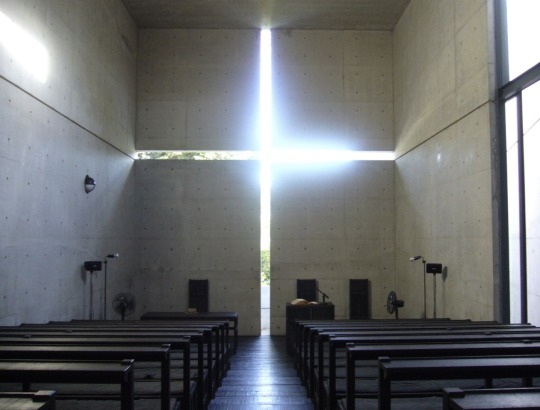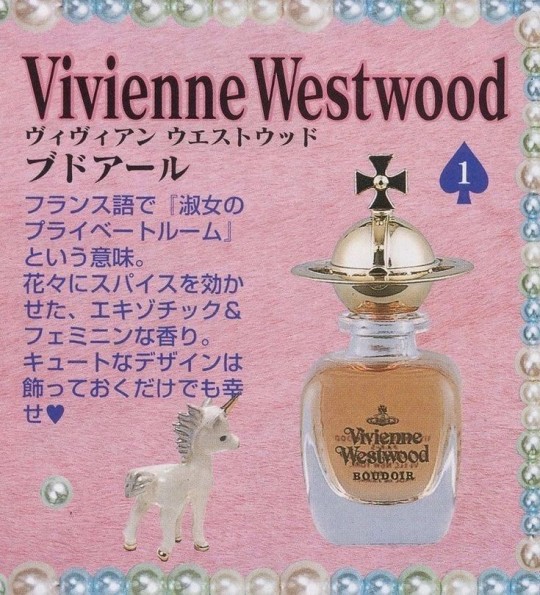#Christianity in Japan
Explore tagged Tumblr posts
Note
oooh I’m curious about your bsd religion hcs. I keep seeing you mention it but I don’t understand it well
Oh! Oh!! I love this topic, but I'm not totally prepared to infodump yet— my copy of The Dilemma of Faith in Modern Japanese Literature: Metaphors of Christianity doesn't arrive until tomorrow, I've bookmarked but not yet read Ryuunosuke Akutagawa's The Man From the West and it's sequel, and I'm still in the thick of a 400-page dissertation on Doppo Kunikida. In other words, I have several resources I want to dig into before I try to articulate anything substantial.
That said, and to further clarify the above, my headcanons for their religious inklings come from (1) the irl authors' relationships with religion and (2) Kunikida's expressed spirituality in Osamu Dazai's Entrance Exam.
I've been jotting notes on which authors (or characters, re: Gin) were Christian or engaged with Christianity more than others, which I've summarized for my personal reference into a rough/informal/irreverent/snarky outline. I've copied and pasted the outline below, although it's mostly editorializing and the supporting documentation is scattered among my separate posts/research materials/group chats.
I'll follow up once I have a more substantive response ft. examples and citations for you!
Catholic (disrespectfully/either literally or incidentally satirizing it)
Verlaine
Gin
Catholic (by proxy/childhood exposure)
Chuuya
Rimbaud
Christian (by conversion)
Kunikida (Protestant, Calvinistic)
Verlaine (Roman Catholic)
Very Eastern Orthodox
Fyodor
Nikolai
Not Christian but Suicidally Depressed Enough to Be Obsessed with Concepts like Hell and Original Sin
Dazai
Akutagawa
Christian but Loves Blasphemy and Hates Organized Religion
Rimbaud
Kunikida
Harbors Disdain for Christianity as Expressed by Others/Generally Irreverent
Dazai
Akutagawa
Rimbaud
11 notes
·
View notes
Text
'The Colors Within' and the Colors Without ⭐️⭐️⭐️⭐️: Animation Is Film 2024
From the beginning of the Japanese animated feature film, “The Colors Within,” we’re entering a strange world and that’s not because the dialogue is in Japanese, but because it starts with a child praying to God. A young girl prays that she will learn to accept the things she cannot change. “The Colors Within” about the formation of a band seen through the eyes of Totsuko Higurashi (Sayu…

View On WordPress
1 note
·
View note
Text
j… jesus oppa ;____;
#ashsksjsks jesus k-idol era… and when he does his comeback stage…..???#i just want you to know the last thing i saw before my plane took off was an “i’m going to jesus cafe” message from my grandma#and the first thing i saw when i landed fifteen hours later yesterday was 130+ unread messages on kakaotalk#and i opened it and most of it was cutesy photos my grandma had sent me of her and white jesus#also: she is not even christian…. her friends were like wanna come and she was just like WHY NOT?#also… if you’re interested… in japan there’s a manga called 聖☆おにいさん (translated as ‘saint young men’)#which focuses on the lives of roomates jesus and buddha#(also there are fancomics based on this… including. of course. jesus/judas)#christmas
12K notes
·
View notes
Text

The Church of Light in Japan. Designed by Tadao Ando, the same architect that designed the Modern in Ft. Worth. Beautiful.
10K notes
·
View notes
Text

https://www.instagram.com/elenaeban?igsh=MXVhY3E5ajdwMzR4bg%3D%3D&utm_source=qr
#balenciaga#aya takano#girlblogging#avant garde fashion#commedesgarcon#yohji yamamoto#junya watanabe#takahiro miyashita#jun takahashi#undercover#soloist#ann demeulemeester#rei kawakubo#walter van beirendonck#dirk bikkembergs#macross#maurizio amadei#ma+#marc le bihan#elena dawson#uma wang#guidicommunity#carol christian poell#japanese fashion#japan fashion#2014 nostalgia#i miss 2014#2014 grunge#soft grunge#dark coquette
521 notes
·
View notes
Text






Co&Lu (Cocolulu) winter collection adverts.
Top spread: Egg Dec 2008 Middle spread: Egg Dec 2009 Bottom spread: Egg Dec 2011
#gyaru#gyaru gal#ギャル#gyarustyle#gyaru blog#gyaru fashion#amekaji#ganguro#japanese fashion#japanese magazine#japanese culture#japan#christian girl#christian blog
181 notes
·
View notes
Text
Early contacts between Japan and the West were commemorated by Japanese artists in screen paintings. In this example, Kano Naizen depicted scenes associated with the “southern barbarians” arriving in Japan:

Zooming in, we can see the carrack that carried the Portuguese to Japan:

The mingling of Japanese and Portuguese merchants, with a focus on the animals that the merchants brought to Japan:

And, in the upper right corner, a temple where worshippers bow before an image of Jesus:

{Buy me a coffee} {WHF} {Medium} {Looking Through the Past}
206 notes
·
View notes
Text


十字紋黒織部茶碗, cross kuro oribe chawan
961 notes
·
View notes
Text
The world if people stopped applying their understanding of "conservatism" and "religion/christianity" through a very modern, deeply American view onto Death Note (a manga from the Early-mid 2000s which is very much set in the cultural and societal context of early-mid 2000s Japan and all that entails):

#death note#fandom wank#i just be ramblin#listen I get it there's christian imagery#it's not bad to go over what that entails and whatnot. fun even#but beyond some potential parallels and symbols you have to understand that this is a japanese story set in japan in the early-mid 2000s#(and later an imagined 'future' from there)#you are not understanding the story if you're placing the characters on a political spectrum of beliefs based on what conservatism looks#like to you#you're superimposing your personal modern experiences and your country's societal/cultural state onto Death Note and it's characters and#calling it 'a reading'#I genuinely don't know how many more times I can endure people acting like Soichiro Yagami and Teru Mikami have the exact same set of#beliefs and religion and standards as a Southern USA republican/ultra conservative super christian#Or hell. People assuming that Light Yagami can't ever be relatable because someone like Light looks to them like a teacher's wet dream of a#perfect student who is always working hard and studying#when the truth is that while Light is the top student in Japan at one point‚ everything he is doing is within the realm of expectation for#'good' Japanese students. Not exceptional or supernatural or beyond dedicated. Good.#This is a manga where the time period and the setting and society at the time are deeply important#And you will never hope to have an understanding by forcing it to conform to what 'normal' society looks like to you#relating to character's experiences can go beyond relating and end up in territory where you're superimposing your experiences onto their#fictional reality and calling it canon#edit (because people put some good tags on this post): even though I was kind of vague about it this also goes for assuming that#christianity is the only possible religion any characters could be into#the options aren't either athiesm or christianity. there are other big religions in Japan#and in the same way Christianity colors American society and experiences even for people who have never practiced‚ so goes the way society#and people's general beliefs are influenced by Japan's major religions#the person in the tags who mentioned Shinto gets a cookie
77 notes
·
View notes
Text




"The Bastard's back!" - PAC
#Kazuchika Okada#Matthew Jackson#PAC#Nicholas Jackson#Matt Jackson#Nick Jackson#Matthew and Nicholas#Christian Cage#All Elite#AEW#All Elite Wrestling#The Young Bucks#NJPW#AEW Dynamite#AEW Rampage#AEW Collision#New Japan Pro Wrestling#Rainmaker
379 notes
·
View notes
Text

Chapel ⛪🕰
Photo by Yoonseul ʚᰔɞ
#aesthetic#photography#tumblr#travel#beauty#canon photography#post canon#this is canon#canon#film photography#artists on tumblr#photographers on tumblr#december#original photographers#camera#my art#architecture#christine chapel#sky photography#sunset#landscape#town and country#small town aesthetic#my photos#south korea#vintage#vibes#culture#japan#christianity
26 notes
·
View notes
Note
lollll stevens insta post is so tone def too like uhh u can smell the privilege coming off this 🧍

ohhhh... I think I'm going to hurt him
#''for those who won't be joining us'' WON'T?????? Will Not. huh hm. strange phrasing#how about. for those who can't afford to join us. god i'm rollin my eyes#WHY DOES THIS FEEL SO STANKY. so wait#does this decision have DIRECT CORRELATION to him wanting to do more of his food shows again???#the ones where he takes his christian ass to upscale dining places in japan and italy and shit and eats the most expensive thing he can fin#bc that is SO not what ppl subbed to watcher for bro. this was NOT worth-it hype#this was ghoul boys hype#and i don't gaf about production value eitherrrRRRR#sergle answers#i know i'm not alone in liking the stuff they made that was lower production value#that's not where the Value actually lies. it isn't valuable bc it's more Produced#it's valuable bc it's funny and people like ryan and shane's personalities and the show formats
102 notes
·
View notes
Note
Hellooooo! 👋
Thank you again for taking my previous request with the immortal x reincarnation Headcannons 🥺 I forever love that trope to death
I enjoy seeing others Headcannons for the guys💖 thus why i’m requesting another Headcannons for once again, the Kitsunes
Since it’s December 👀 do you think you could come up with some Headcannons for what the three Kits would do on Christmas?
Like Aki trying to trap Santa for example🥺
SO! 👏
A quick history lesson to preface this! (Which I had to google, these fox idiots and fan fics involving them have me googling so much lately)
While Christmas first appeared in Japan in the 16th century, it wasn't widely celebrated until the Meiji Era (1868-1912)
If we take their release date as the canon date for things (so they got foxified 200 years prior to their release) that means they got turned into foxes around 1823, aka the Edo Period
So yeah, they have been foxes for the whole of christmas being a major/regular thing in japan and also being kitsune probably did not even celebrate it cause it might be competition???? (would they bro out with Jesus or try and fist fight him in a parking lot?????? surely not on the dude's birthday! No one is that cruel)
but yeah, it's safe to say their christmas this year (or maybe in 2023 cause they WERE released on December 5th, how quickly did you unfox them??) with you is like---- their first christmas EVER
ALSO SPEAKING OF CHRISTMAS IN JAPAN
it's considered a couples' holiday-- or at least one you spend with friends at a party or something
sooooo with that being said
Aki:
ya know originally when you said he'd try to catch santa I was like 'nah' but then I thought about it and like
actually you're so right??
he totally would though
at least he would try
is he gonna ransom santa??
beat him up???
strike some kind of deal for presents???
JUST VIBE WITH THE DUDE????
even he's not sure, he's gonna see how it goes
I think he's very santa focused until he hears that christmas is a couple's holiday
then his gears shift so so fast
and don't even get me STARTED about after he heard about mistletoe
his santa trap plans become you trap plans so quickly
and all of them end with you kissing him
also he heard there's cake and fried chicken and frankly
he thought all this was really silly when he first heard it but it's low key one of his favorite holidays now
Haru:
Hoe hoe hoe
okay but no LISTEN
there's this saying that the most sex in japan is happening on christmas or something to that tune
so like
Haru has known about this holiday for a while
he's actually the only one who knew about it before hand
though his views on it are very like-----
in a horny japanese way
he only knows it as the go to a party and getting laid holiday
which fair
but yeah
his views on things sort of change a little now that he's got his powers back and is not stuck in fox mode for the first time during this holiday
well-- his views haven't changed but the mood has for him
he's still wanting to take you out and wine and dine you and also end up back at one of your places
but 1) it's more romantic to him now than just a fun lay like it would've been before you
and 2) frankly this is just his usual m.o. just more christmas flavored
it's like a pre-valentine's day as far as he's concerned
aka another excuse to take you out, show you off, give you a good time then end the night with some alone time back at your place <3
Fuyu:
The oldest and most shinto-y of the bunch, he's the most taken aback by this holiday
he doesn't hate it or anything but he does see it as humans doing kooky human things
but you've opened him up to a lot of new experiences recently so ya know what??
alright!
let's go out and have a modern little christmas date
it's different but it could be fun!
and it is fun actually
he tries a lot of new things and he actually has a good amount of fun with you
it's very much a cute little sweet christmas date
he tries fried chicken for the first time
well, okay--- yakitori exists but my understanding is that that's more grilled, and tempura exists but that's sort of different to like------- KFC style deep fried shit
he's def had stuff like it but not like---- KFC ya know????
he likes it fine
lil greasy for his taste but it's nice for a treat
but yeah it's mostly just a pleasant little date, you and him just kinda enjoying the sights and sounds together in this new world that he refused to partake in for so long
and it def ends with a christmas cake
and maybe you showing him mistletoe
aaaand maybe telling him about the spike in spicy times if you feel so inclined ;3
#blush blush game#bear text#blush blush#bear talks#bb game#sad panda studios#kitsune bundle#haru#fuyu#aki#also I want it on the record that I am a dumb slightly drunk white bitch talking about christmas in japan#but also like---------#japan and it's relationship to christmas and the christian faith are just#wildly different than it is in the states#it's just a very different creature in a santa hat#not bad OBVS but yeah idk I just couldn't fully ignore the fact that they're like#dead ass fox spirits from a different religion#they're literally creatures from a different faith from a whole ass different country and a long rich history with said faith#IDK WHAT MY POINT IS#other than I'm white and dumb and please don't yell at me I guess?????#also that sex thing is legit a thing I've heard a handful of times but who the fuck knows if it's actually true#probably not now a days I feel like most shit like that that was like#A THING back in the 80s and 90s isn't actually A Thing anymore like that across the world#still fun to play with though lol
22 notes
·
View notes
Text


#grunge#dark#punk#aestheitcs#punk aesthetic#aestethic#aesthetic#soft grunge aesthetic#indie#2014 revival#christian dior#dior#dior addict#dior aesthetic#vivienne westwood#hole#90s#90s aesthetic#90s supermodels#90s fashion#fashion#japan
41 notes
·
View notes
Text





"We wonder how our bee friends are doing at Buzzin' Corner… 🐝 🇯🇵" - march 31, 2024 📷 @.f1 / instagram
#sebastian vettel#f1#formula 1#japanese gp 2023#fic ref#fic ref 2023#japan#japan 2023#japan 2023 thursday#fic ref 2024#2024 not a race#between australia and japan 2024#charles leclerc#carlos sainz#yuki tsunoda#pierre gasly#liam lawson#lando norris#alex albon#zhou guanyu#fernando alonso#lance stroll#sergio perez#tw max#logan sargeant#tw christian horner#sewis#smick#with george#valtteri bottas
123 notes
·
View notes
Text
Amane's birthday flower tweet

(tweet links here)
Happy Birthday to everyone born today. Today is also Amane Momose from #MILGRAM's birthday. Her birth flower is Passiflora caerulea (tokeisou/Blue Passion Flower). The name "Passion flower" [tl note: passion as in "the passion/suffering of Christ, not enthusiasm] was used by Christian missionaries, it comes from the stamen's resemblence to the Crucifixion of Christ, with the 10 petals representing 10 Apostles. The passion flower's hanakotoba are "Faith", "Sacred Love" as well as "Religious fervour". Just so you know, this is simply an annecdote about the flower, it's not directly related to Amane's origins. Hanatokoba is purely allegorical. Simply put, just because the blue passion flower has this kind of backstory and hanakotoba, it doesn't mean Amane's religion is the same. Just added this supplement in case this is the first time you've had a run in with the Hanakotoba Guy and found it hard to understand. [Note: 花言葉おじさん Hanakotoba ojisan aka Hanakotoba Guy/Old Man Hanakotoba/Mr Hanakotoba is Yamanaka's nickname for himself when he does these things, he also used the term in Mikoto's birthday tweet]
本日お誕生日の方おめでとうございます。 #ミルグラム では桃瀬遍の誕生日でもあります。 誕生花はトケイソウ。十字架にかけられたキリストに似た雄しべと10人の使徒に見える花弁から別名「受難の花」と呼ばれ、キリスト教の布教に利用されました。花言葉は『信仰』『聖なる愛』そして『宗教的熱情』。 ちなみにこの花に関してのエピソードなだけで、本人の出自とは直接関係ありません。花言葉はあくまで寓意です。 噛み砕いてわかりやすく言うと、トケイソウってお花にそういうエピソードと花言葉があるってだけでアマネの信教がそうだって話じゃないよってことね。花言葉おじさんと邂逅するのが初めてだとわかりづらいだろうなと思って補足。

#amane momose#milgram#ミルグラム#milgram translation#yamanaka's twitter#Side note: Jesus had 12 apostles#11 if we don't count Judas on account of him being a traitor/dead#but the flower only has 10 petals so I wonder which apostle got left off#I bet it was Paul#no one likes that guy#I think some aspect's of Amane's religion were inspired by Jehova's witnesses (the blood transfusion thing) and deemphasis of birthdays#but newer cults often draw from many different kinds of religion so it makes sense its probably not 1:1 with Christianity or any other grou#fun fact: apparently the missionaries that named the passion flower were Spanish#which makes sense since Spain is right next to Portugal#And Portuguese missionaries were some of the first Europeans to trade with Japan#enough trivia for one post ww
44 notes
·
View notes